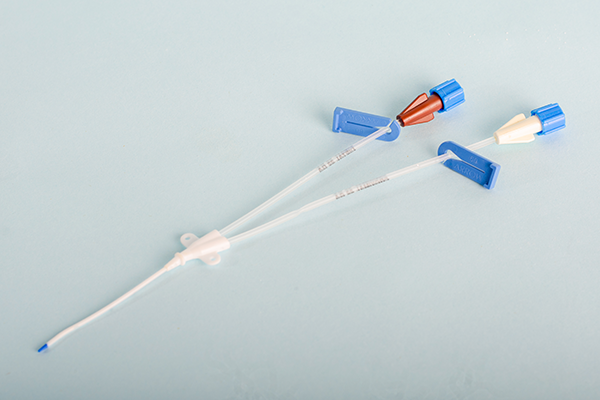As with all projects, the planning phase is one of the more crucial elements to a successful outcome. In the same light, a biological evaluation plan (or BEP as we like to call it) is one of the core pieces for medical device technical files, summarizing the device, its intended use, and the plan to demonstrate its safety. Altogether, a BEP provides the story of your device and tells the reader all they need to know about it from the perspective of the risks it may carry and the approaches to be taken to mitigate these risks and conclude a safe biocompatibility profile for the device. In the end, the purpose of this is to ensure that patient safety – the founding principle of biocompatibility evaluations – is not compromised.
Besides the obvious need for a biological evaluation plan, the requirement of such a document is written into all biocompatibility standards, starting from ISO 10993-1 to the more specific vertical standards, like ISO 7405 (for dental devices), and ISO 18562-1 (for gas pathway devices), to the FDA guidance document on biocompatibility assessment.
Fundamentals of a BEP
The first basic rule is to follow the standard slogan from quality assurance, “If it isn’t written down, it didn’t happen.” But simply writing just anything will also not be enough. The idea is to show you have thought through the risks and have a clear path forward to demonstrate the safety of the product.
The BEP should present the reader with the details of the device, its intended use, the potential risks associated with its use, as well as all currently available information that could be used to mitigate these risks. Any gaps identified through the review of available data should be covered with additional evaluation, justification, or further testing. The goal of this document is to provide a comprehensive review and put into writing a plan to address the relevant biological risks to support the biological safety of the device.
The key to a great BEP is a clear and concise storyline. The BEP story should be simple and straight-forward with no surprise plot twists. This is not a thriller or whodunit murder mystery. The clearer the storyline and the easier it is to read, the better the BEP will be.
Tailor Your Message to the Desired Audience
Since the BEP is a document that tells the story of your device, you need to take into consideration the target audience for this story. While patient safety is a universal concept regardless of target region (where you are submitting your device), one must recognize that regulatory reviewers from different areas around the world may require somewhat different approaches for evaluation. Due to this, one should always consider the audience and tailor the story to them.

Furthermore, the BEP must be written in a way that any reviewer, regardless of whether they are seasoned subject matter experts, new to their position, or unfamiliar with the specific device at hand or the proposed approaches, can grasp the concepts presented in the document. For these reasons and other compounding factors, it is the job of the writer to make the reading and information presented to them as clear and simple as possible.
What Should Go into a BEP
Because the BEP is the story of the device, it comes as no surprise that the first thing to focus on is the description of the device, its components, and their intended use. The thorough description then leads to the discussion of the type and duration of contact the device has during its use. To note, with the ever-increasing complexity of devices, it is likely that different parts of the device have different types of contact, which should be clearly described. Also, pictures and diagrams that help clarify the message are usually valuable. Mistakes to avoid, however, are the use of extensive highly technical verbiage/terminology (that only specialized medical personnel will understand) and the use of language (e.g., fluff) that does not add to the aspect of biological evaluation. As a visual learner, I typically also try to close my eyes and imagine the device as it would be used in a clinical setting to sense whether the description is clear enough.
Before the end of the description section, the reader should have clarity on how the device and which parts of it contact the patient or user during the use of the device. From there, the next step would be to categorize the device and its components, which helps to define the relevant biological endpoints for evaluation. This is where oftentimes ambiguity can derail the BEP. The reason for this is that when testing or evaluation needs to target only a specific portion of the device, then including parts that do not have the same risks may yield an incorrect evaluation. For instance, if it is not clear which parts have no contact during use, and those non-contacting parts are in the end included in the test article, then this could result in a sample that does not accurately represent the patient experience with the device, leading potentially to the need to retest. Thus, the step-by-step explanation from device description to its categorization to defining relevant biological endpoints for evaluation should be written in a way that all readers, regardless of whether it is an internal reviewer or a regulatory reviewer, will end up at the same verdict.

At this point, the actual assessment begins. The first step here is to define the materials and processing that are used to manufacture the device. This information is needed to demonstrate that the process is under control, and you know exactly what goes into making your product. The depth of this characterization in general depends on the invasiveness of the device as well as duration of use. Furthermore, if you are using some available information from other devices, such as an already cleared previous generation of the same product, this section should contain detailed description of any changes that are occurring to define whether additional risks are present that require further assessment or testing.
In the end, the BEP should propose a strategy to address all the relevant biological endpoints and specify which approach, e.g., justification or testing, and if it be the latter, which type of test should be performed. The approaches chosen should be clearly described and explained. These rationales should be written in a way that the reader can follow, understand, and (hopefully) agree. Furthermore, years later when the technical files may need a re-review, the detailed description of the why will be a lifesaver for sure.
Since the discussion of different endpoints and the strategies to cover these endpoints can turn out to be quite lengthy at times, it is recommended to include a summary table of the proposed approaches for all the endpoints as a conclusion of the proposed strategy. Even if a justification was used, that should be mentioned in the summary table to make it easier for the reader to understand the approach that is being proposed. In the table, the approach should be clearly stated, noting the testing or assessment strategies to be applied and agreed upon prior to moving towards testing. This way, if later someone reads the document, they can understand the reasons behind why something was pursued. This summary table can be helpful in rounding up the discussion and showing the reader you have a plan forward to address all the relevant endpoints. Also, if testing is recommended, a short summary of the test method as well as acceptance criteria should be included in the BEP.
The last important piece to the BEP, if testing is recommended, is the clear description of the test article or any special considerations to be applied for testing. Since some of the device components could have different types of contact, this should be accounted for when choosing the right (representative) test article. For instance, if the device is intended for blood contact and only a portion of it may be in actual contact to blood during use, only this part should be the focus of hemocompatibility testing. Thus, for sample preparation for relevant hemocompatibility testing, it is important to describe the exclusion of other areas and surfaces that do not have any contact to blood. Any additional considerations, like if the device is made of degradable materials and how each phase of the degradation process is addressed, should also be written into the plan. Moreover, if your device has some challenging features that are known to create problems for testing, describe them up front and devise a plan for dealing with these problems by outlining the proposal in your BEP.
Use of an Executive Summary
An executive summary is helpful, especially when a more risk-based approach is taken, in which justification is provided instead of testing for certain endpoints. This helps with guiding the expectations of the reader towards your goal before the document is read in its entirety and prepares the reader for your story of the device. For example, if your storyline is complicated or deviates from the standard approach (maybe your device entails some prior testing but not a sufficient amount to cover all relevant biological considerations), a well-written executive summary will make your storyline clearer and more predictable. Furthermore, if your device has challenging features, the executive summary is a great place to state this right up front; that way the reader will understand why you are crafting a more complicated testing plan.
Summary of Writing a Great BEP
As a recap, here is a summary of what the BEP should include:
- Thorough description of the device and its intended use in enough detail to allow the reader to fully understand the type and duration of contact for each part of the device,
- Categorization of the device and its components that helps to define the relevant risks to be assessed,
- Any available information that could be useful in the risk assessment and any foreseen gaps that need to be covered with additional data, and
- Proposed approaches to cover all the relevant biological endpoints and justification for the chosen path.
Two more things will generally benefit your BEP:
- An executive summary as the first section to the document, especially if justification or more untraditional approaches have been utilized to prepare the reader for what is coming, and
- A simple, easy-to-follow storyline about the product, its potential risks for biocompatibility and the approach to cover them.
Now you are equipped with what you need to know about writing a great BEP. If you need any help with your BEP, reach out to the Nelson Labs Expert Advisory Services team at [email protected]. Our experts will be happy to assist you.


